Hua-Liang Wei
A Modified Dynamic Time Warping Approach and Innovative Average Non-Self Match Distance Method for Anomaly Detection in ECG Recordings
Nov 01, 2021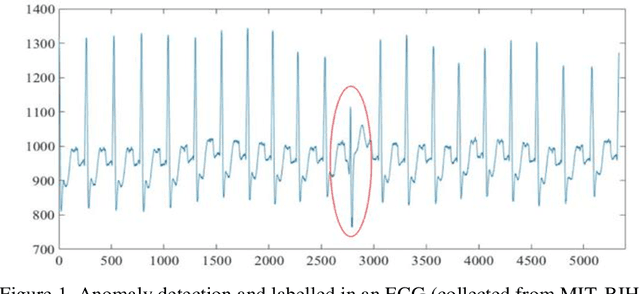


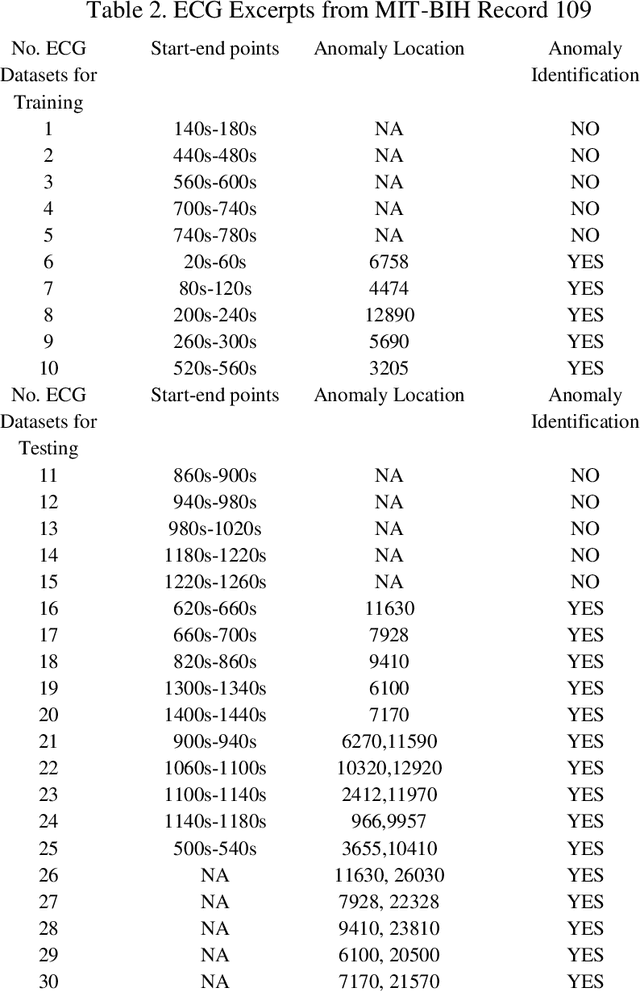
Abstract:ECGs objectively reflects the working conditions of the hearts as these signals contain vast physiological and pathological information. In this work, in order to improve the efficiency and accuracy of "best so far" time series analysis-based ECG anomaly detection methods, a novel method, comprising a modified dynamic time warping (MDTW) and an innovative average non-self match distance (ANSD) measure, is proposed for ECG anomaly detection. To evaluate the performance of the proposed method, the proposed method is applied to real ECG data selected from the MIT-BIH heartbeat database. To provide a reference for comparison, two existing anomaly detection methods, namely, brute force discord discovery (BFDD) and adaptive window discord discovery (AWDD), are also applied to the same data. The experimental results show that our proposed method outperforms BFDD and AWD.
Modelling COVID-19 Pandemic Dynamics Using Transparent, Interpretable, Parsimonious and Simulatable (TIPS) Machine Learning Models: A Case Study from Systems Thinking and System Identification Perspectives
Nov 01, 2021Abstract:Since the outbreak of COVID-19, an astronomical number of publications on the pandemic dynamics appeared in the literature, of which many use the susceptible infected removed (SIR) and susceptible exposed infected removed (SEIR) models, or their variants, to simulate and study the spread of the coronavirus. SIR and SEIR are continuous-time models which are a class of initial value problems (IVPs) of ordinary differential equations (ODEs). Discrete-time models such as regression and machine learning have also been applied to analyze COVID-19 pandemic data (e.g. predicting infection cases), but most of these methods use simplified models involving a small number of input variables pre-selected based on a priori knowledge, or use very complicated models (e.g. deep learning), purely focusing on certain prediction purposes and paying little attention to the model interpretability. There have been relatively fewer studies focusing on the investigations of the inherent time-lagged or time-delayed relationships e.g. between the reproduction number (R number), infection cases, and deaths, analyzing the pandemic spread from a systems thinking and dynamic perspective. The present study, for the first time, proposes using systems engineering and system identification approach to build transparent, interpretable, parsimonious and simulatable (TIPS) dynamic machine learning models, establishing links between the R number, the infection cases and deaths caused by COVID-19. The TIPS models are developed based on the well-known NARMAX (Nonlinear AutoRegressive Moving Average with eXogenous inputs) model, which can help better understand the COVID-19 pandemic dynamics. A case study on the UK COVID-19 data is carried out, and new findings are detailed. The proposed method and the associated new findings are useful for better understanding the spread dynamics of the COVID-19 pandemic.
Singularity and Similarity Detection from Signals Using Wavelet Transform
Oct 29, 2021Abstract:The wavelet transform and related techniques are used to analyze singular and fractal signals. The normalized wavelet scalogram is introduced to detect singularities including jumps, cusps and other sharply changing points. The wavelet auto-covariance is applied to estimate the self-similarity exponent for statistical self-affine signals.
A Global to Local Double Embedding Method for Multi-person Pose Estimation
Feb 16, 2021
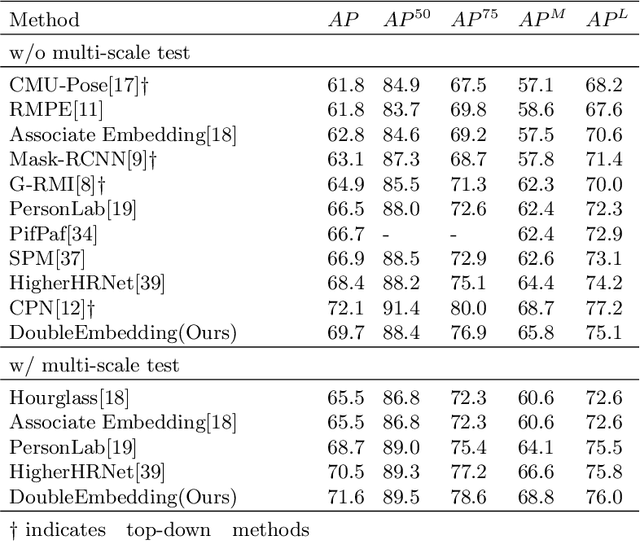
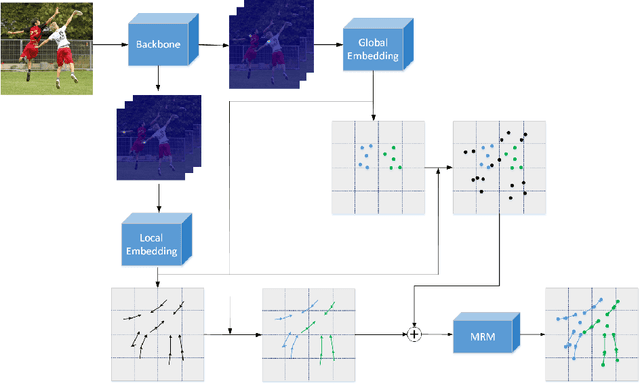

Abstract:Multi-person pose estimation is a fundamental and challenging problem to many computer vision tasks. Most existing methods can be broadly categorized into two classes: top-down and bottom-up methods. Both of the two types of methods involve two stages, namely, person detection and joints detection. Conventionally, the two stages are implemented separately without considering their interactions between them, and this may inevitably cause some issue intrinsically. In this paper, we present a novel method to simplify the pipeline by implementing person detection and joints detection simultaneously. We propose a Double Embedding (DE) method to complete the multi-person pose estimation task in a global-to-local way. DE consists of Global Embedding (GE) and Local Embedding (LE). GE encodes different person instances and processes information covering the whole image and LE encodes the local limbs information. GE functions for the person detection in top-down strategy while LE connects the rest joints sequentially which functions for joint grouping and information processing in A bottom-up strategy. Based on LE, we design the Mutual Refine Machine (MRM) to reduce the prediction difficulty in complex scenarios. MRM can effectively realize the information communicating between keypoints and further improve the accuracy. We achieve the competitive results on benchmarks MSCOCO, MPII and CrowdPose, demonstrating the effectiveness and generalization ability of our method.
Boosted Convolutional Neural Networks for Motor Imagery EEG Decoding with Multiwavelet-based Time-Frequency Conditional Granger Causality Analysis
Oct 22, 2018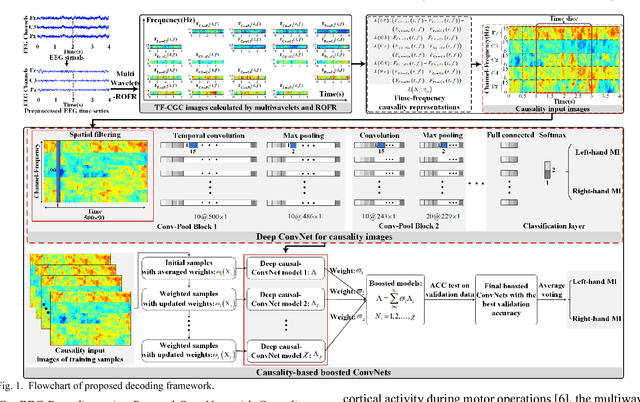
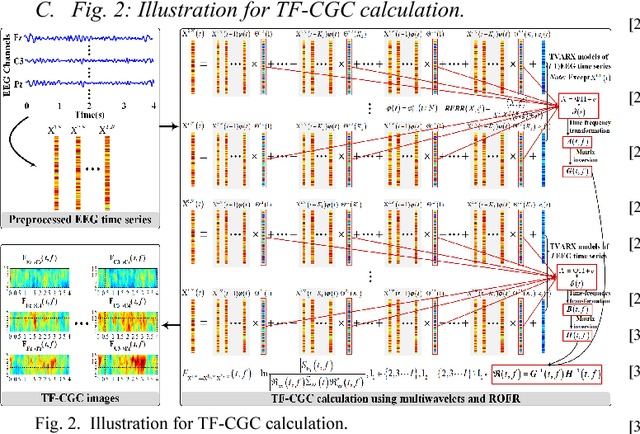
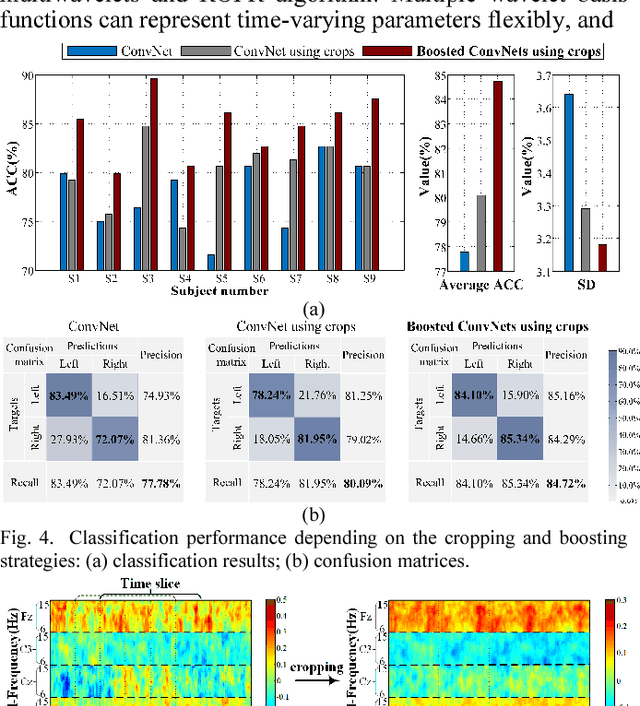
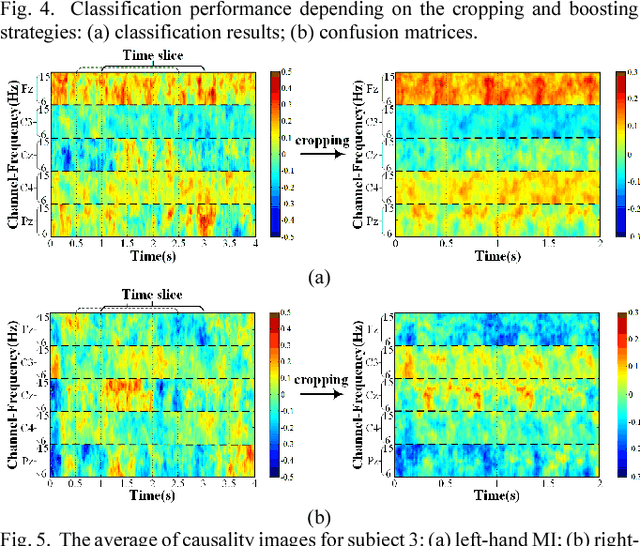
Abstract:Decoding EEG signals of different mental states is a challenging task for brain-computer interfaces (BCIs) due to nonstationarity of perceptual decision processes. This paper presents a novel boosted convolutional neural networks (ConvNets) decoding scheme for motor imagery (MI) EEG signals assisted by the multiwavelet-based time-frequency (TF) causality analysis. Specifically, multiwavelet basis functions are first combined with Geweke spectral measure to obtain high-resolution TF-conditional Granger causality (CGC) representations, where a regularized orthogonal forward regression (ROFR) algorithm is adopted to detect a parsimonious model with good generalization performance. The causality images for network input preserving time, frequency and location information of connectivity are then designed based on the TF-CGC distributions of alpha band multichannel EEG signals. Further constructed boosted ConvNets by using spatio-temporal convolutions as well as advances in deep learning including cropping and boosting methods, to extract discriminative causality features and classify MI tasks. Our proposed approach outperforms the competition winner algorithm with 12.15% increase in average accuracy and 74.02% decrease in associated inter subject standard deviation for the same binary classification on BCI competition-IV dataset-IIa. Experiment results indicate that the boosted ConvNets with causality images works well in decoding MI-EEG signals and provides a promising framework for developing MI-BCI systems.
 Add to Chrome
Add to Chrome Add to Firefox
Add to Firefox Add to Edge
Add to Edge